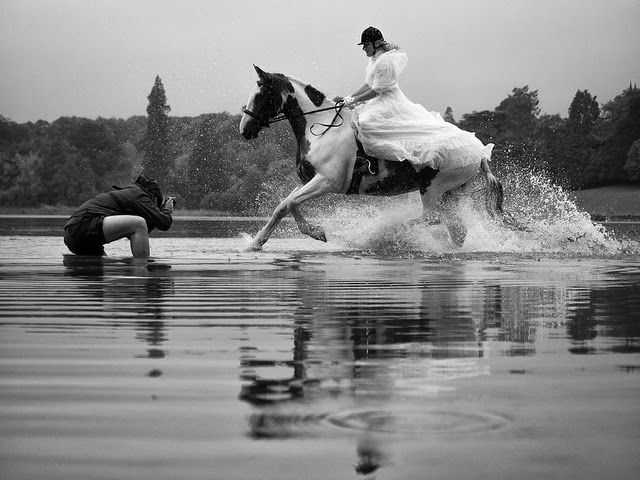NaNoWriMo is just around the corner and I'm getting excited.
November is the national novel writing month (NaNoWriMo) when scads of odd folks (like me!) forgo human contact, regular meals, good hygiene and sleep to write a novel in 30 days.
Impossible?
Far from it!
In 2011, 256,618 writers participated in NaNo and 36,843 of them, a little over 14%, crossed the 50K finish line. I'm boggled! 37 thousand people wrote a novel in a month last year. Sure, we're talking about first drafts and first drafts need a LOT of work: editing, feedback, professional editing, and so on, but when you've got the first draft done you've got it! You've caught the tale of the story-dragon. You're a winner!
NaNoWriMo: The Rules
Here's how NaNoWriMo works:
1. Write a 50,000-word (or longer!) novel, between November 1 and November 30.
2. Start from scratch. None of your own previously written prose can be included in your NaNoWriMo draft (though outlines, character sketches, and research are all fine, as are citations from other people’s works).
3. Write a novel. A novel is a lengthy work of fiction. If you consider the book you’re writing a novel, the folks over at NaNoWriMo consider it a novel too!
4. Be the sole author of your novel. Apart from those citations mentioned two bullet-points up.
5. Write more than one word repeated 50,000 times.
6. Upload your novel for word-count validation between November 25 and November 30. [1]
Daily Word Count
50,000 words sounds like a lot. And it is! But you've got 30 days to finish, so here's how the word count breaks down:
Write every day:
50,000/30 = 1,667 words per day
Take one day off a week:
50,000/26 = 1,923 words per day
Two days off a week:
50,000/22 = 2,273 words per day
I try to do a minimum of 2,000 words a day. That way I can have the odd day off if I need it.
Getting Signed Up For NaNoWriMo
It's easy, and free, to get involved. Just head on over to the official NaNoWriMo website and sign up. If you want to work on your own that's great, but the site can help put you in contact with NaNo-ers in your area.
Preparing For NaNoWriMo
You may think one or more of these suggestions are loopy, but they've helped me complete the challenge two years in a row.
1. Starting now, write 2,000 words a day.
No, I'm not crazy!
I think practically all writers find some form of writing easy, whether it's fiction, non-fiction, journalling, whatever. Pick the form that's easiest for you and increase your daily writing so that when the first of November comes along you're already writing 2,000 (or so) words a day.
One way to help yourself do this is by blogging. One of the benefits of having a blog is that you can practise writing regularly, writing faster, writing more.
But if you don't feel like blogging you don't have to. Write flash fiction, short stories, guest blog posts, articles, letters to the editor. Whatever strikes your fancy.
2. Work on the structure of your story
You're allowed to outline your story before November 1st and I think it's a fabulous idea. Here are a few links:
The structure of a story
Orson Scott Card & The MICE Quotient: How To Structure Your Story
Short Story Structures: Several Ways Of Structuring Short Fiction
How Plotting Can Build A Better Story
How To Write A Story
Chuck Wendig On Story Structure
The Basics of Good Storycraft: 5 Tips
A Perfect Plot In 6 Easy Steps
Chuck Wendig on Plot, Complication, Conflict and Consequence
The structure of a scene within a story
Making A Scene: Using Conflicts and Setbacks to Create Narrative Drive
Outlining
Kim Harrison's Character Grid
4 Ways Outlining Can Give A Writer Confidence
3. Prepare meals in advance
Eating right and getting enough sleep are important. You, your health, are much more important than writing 50,000 words in a month. Prepare nutritious meals beforehand and freeze them so when you're in the writing trenches all you have to do is pop the meal in the microwave and give yourself a high-five for being awesome!
4. Find a place to write
Some writers like to be in the midst of the hustle and bustle of a coffee shop, or embedded in the soft, cushioned, quiet of their home office, or reclining in a La-Z-Boy.
Some writers find they work best if they write in one and only one spot while others like to move around (one day at the coffee shop, one day in their office, one day sitting on the couch, and so forth).
Do whatever works for you and if you're not sure what does, experiment! This is another thing it's good to find out before November 1st.
5. Tell your friends and family you're going to write 50,000 words in 30 days.
It's important your friends and family know what you're doing and support you.
If you tell them what you're up to, they'll (hopefully) understand why you can't spend as much time with them. Also, you'll likely feel a bit more pressure to win so that, when Uncle Dan asks you at Christmas whether you finished, you'll be able to say, "Of course!" rather than trying to hide behind the mint jelly.
Your family will understand why you've turned into a zombie, someone who nips out from her writing cave to pop food in the microwave or use the facilities. They won't freak out when they see the black circles under your eyes or the way your clothes hang looser or the way you're mumbling to yourself about "plot".
Or something.
Are you doing NaNoWriMo this year? If so, how are you preparing for it?
Notes
1. I wanted to give you a link for these rules, and tell you where to get your manuscript validated, but none of my previous links worked. Chris Baty, the one who started NaNoWriMo in 1999, stepped down as Executive Director in January last year to become a full-time writer. On top of that, the website is being redesigned and moved from Drupal to Ruby-on-Rails. I think that explains the missing links. (Wikipedia)
Photo credit: "Untitled" by Thomas Leuthard under Creative Commons Attribution 2.0.










